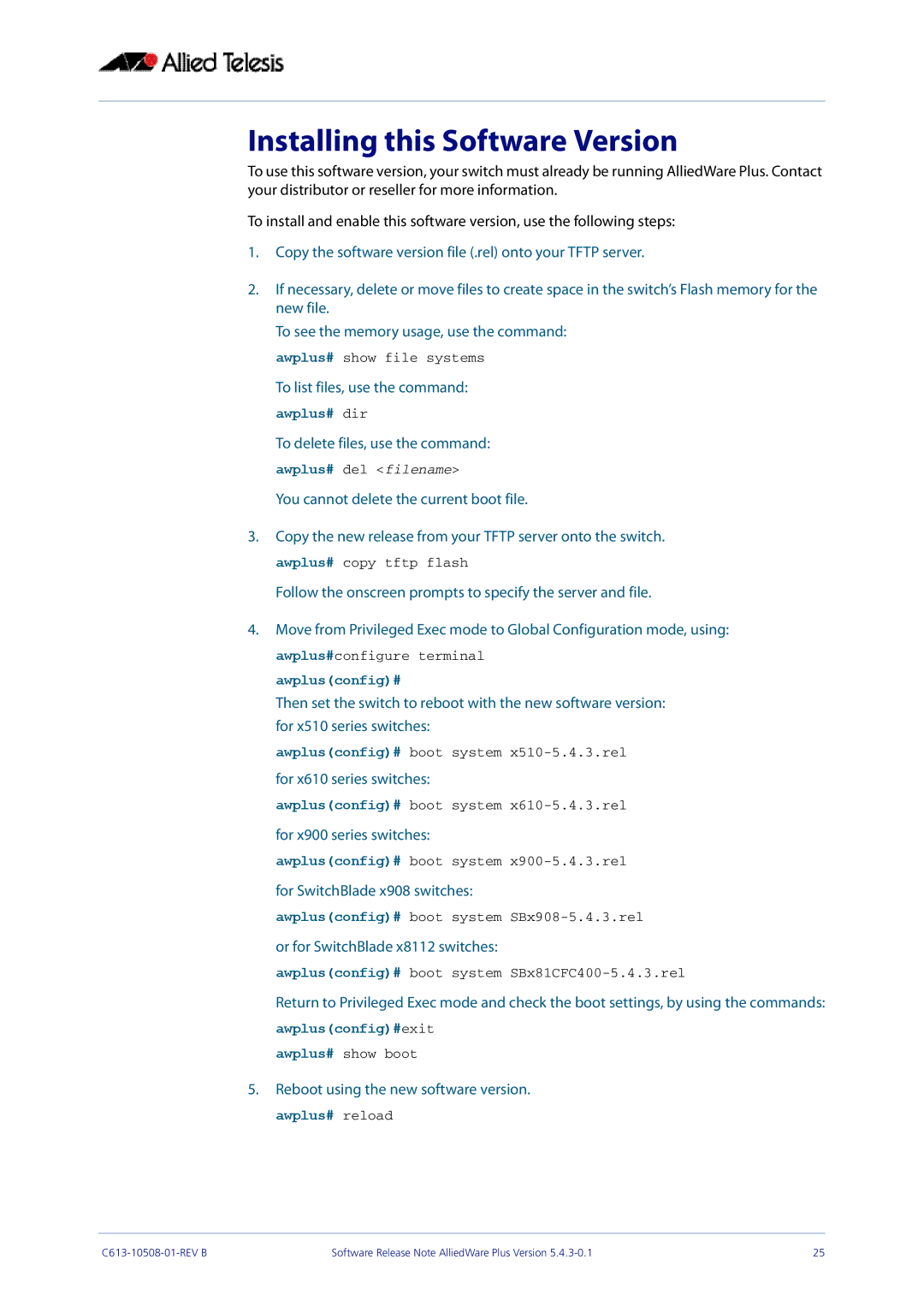X510, X610 specifications
Allied Telesis has long been a key player in the networking industry, and their X610 and X510 series switches underscore this reputation with robust features aimed at businesses of all sizes. Designed to meet the demands of enterprise networks, these switches emphasize performance, flexibility, and ease of management.The Allied Telesis X610 series is a high-performance layer 3 managed switch designed for core or aggregation layer deployments. With options for 24 or 48 gigabit Ethernet ports and multiple 10 Gigabit SFP+ uplinks, the X610 ensures high throughput and reduced latency, making it ideal for bandwidth-intensive applications. The architecture supports advanced routing features, including IPv4 and IPv6 static routing, OSPF, and RIP, which enable seamless integration into an existing network infrastructure.
In contrast, the X510 series offers cost-effective solutions that do not compromise on performance. This series also provides layer 2 and layer 3 capabilities, making it suitable for both edge and aggregation layer deployments. Available with 24 or 48 gigabit Ethernet ports and optional SFP+ uplinks, the X510 can efficiently handle high volumes of network traffic while offering a variety of quality-of-service (QoS) features to prioritize critical applications.
Both the X610 and X510 incorporate the Allied Telesis management tool, AT-View, allowing for intuitive web-based management of network devices. This feature simplifies the configuration process and reduces operational overhead for IT teams. Moreover, the switches include support for SNMP and RMON, facilitating comprehensive monitoring and reporting.
Security is paramount in today's networking environment, and both series offer robust features. The switches support MAC address filtering, IEEE 802.1X port-based authentication, and access control lists (ACLs), ensuring that only authorized users and devices can access the network. Additionally, advanced security protocols help protect against common network threats.
The Allied Telesis X610 and X510 also support Energy Efficient Ethernet (EEE), contributing to reduced power consumption and aligning with green IT initiatives. This is complemented by fan-less designs for the X510 series switches, which offer silent operation, making them suitable for deployment in office environments.
In summary, the Allied Telesis X610 and X510 series switches stand out for their performance, versatility, and security features. They are designed to meet the needs of modern enterprises seeking reliable and scalable networking solutions. Whether used for core switching or as edge devices, these products offer a blend of advanced technology to support a range of networking applications efficiently.

